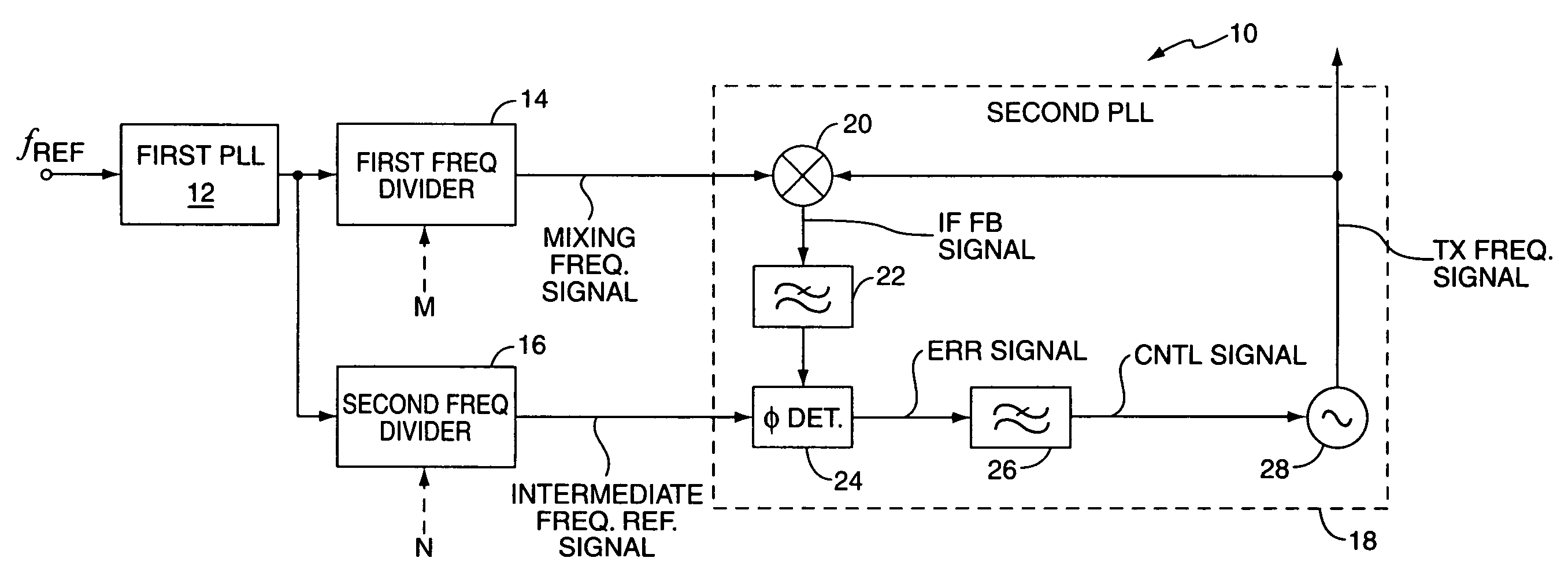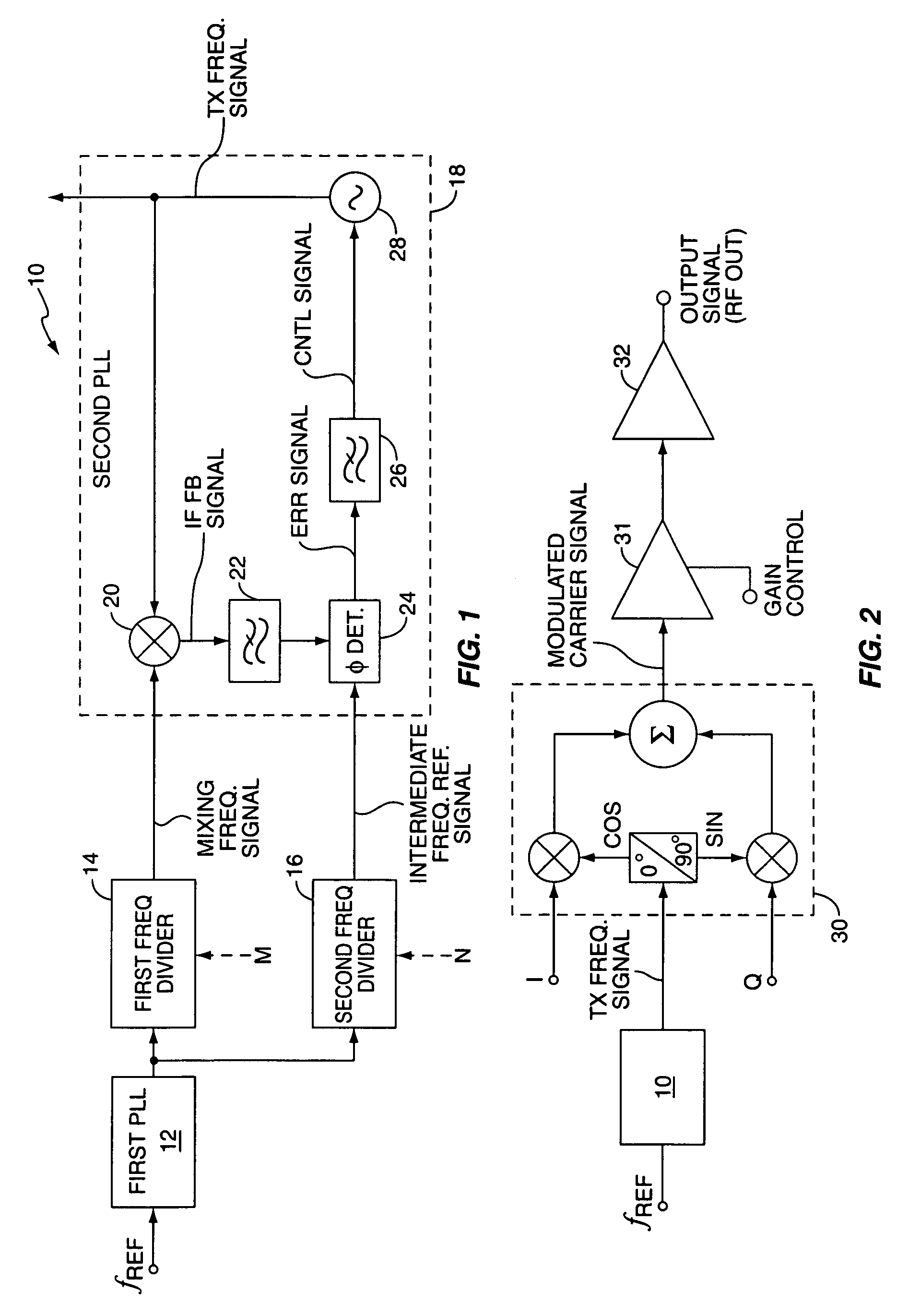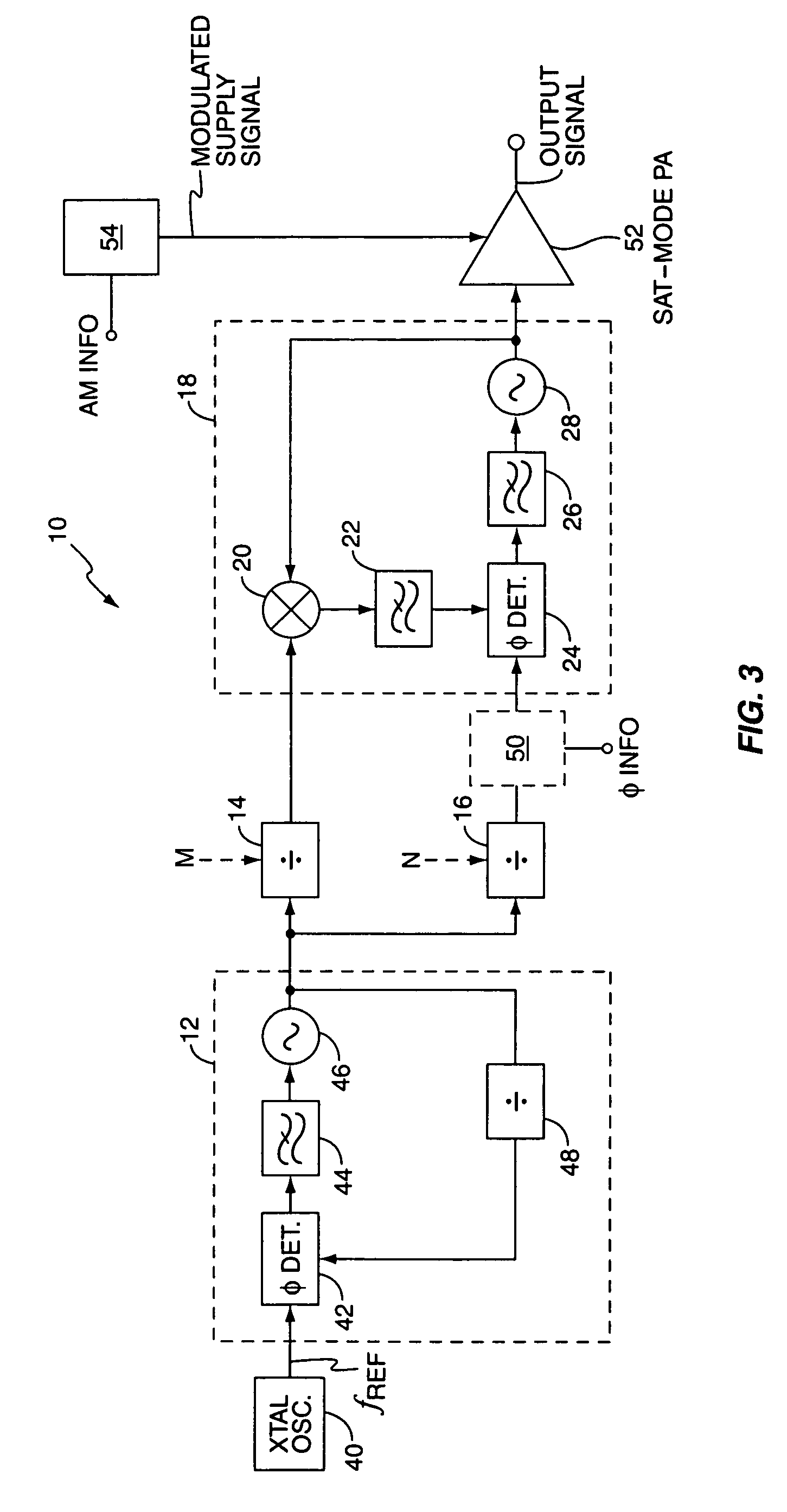Method and apparatus for frequency synthesis in direct-conversion transmitters
a transmitter and frequency synthesis technology, applied in the field of wireless communication, can solve the problems of high tuning sensitivity voltage control oscillators (vcos) used in such frequency synthesis loops, prone to frequency pulling, and low power
- Summary
- Abstract
- Description
- Claims
- Application Information
AI Technical Summary
Benefits of technology
Problems solved by technology
Method used
Image
Examples
Embodiment Construction
[0019]FIG. 1 illustrates an embodiment of a transmit circuit 10 comprising a first phase-locked loop (PLL) 12, first and second frequency dividers 14 and 16, and a second PLL 18. In the illustrated embodiment, the second PLL 18 is configured as a translational PLL and includes a mixer 20, an optional filter 22, a phase detector 24, a loop filter 26, and a Voltage Controlled Oscillator (VCO) 28.
[0020]The first PLL 12 is configured as a main channel synthesizer, and generates a first frequency signal that is non-harmonically related to the transmit frequency signal output by the second PLL 18. More particularly, the first PLL 12 derives a first frequency signal from a reference frequency signal (fREF). The first frequency divider 14 divides the first frequency signal according to a divisor value “M” to produce a desired mixing frequency signal. The second frequency divider 16 divides the first frequency signal according to a second divisor value “N” to generate an intermediate frequen...
PUM
 Login to View More
Login to View More Abstract
Description
Claims
Application Information
 Login to View More
Login to View More - R&D
- Intellectual Property
- Life Sciences
- Materials
- Tech Scout
- Unparalleled Data Quality
- Higher Quality Content
- 60% Fewer Hallucinations
Browse by: Latest US Patents, China's latest patents, Technical Efficacy Thesaurus, Application Domain, Technology Topic, Popular Technical Reports.
© 2025 PatSnap. All rights reserved.Legal|Privacy policy|Modern Slavery Act Transparency Statement|Sitemap|About US| Contact US: help@patsnap.com



